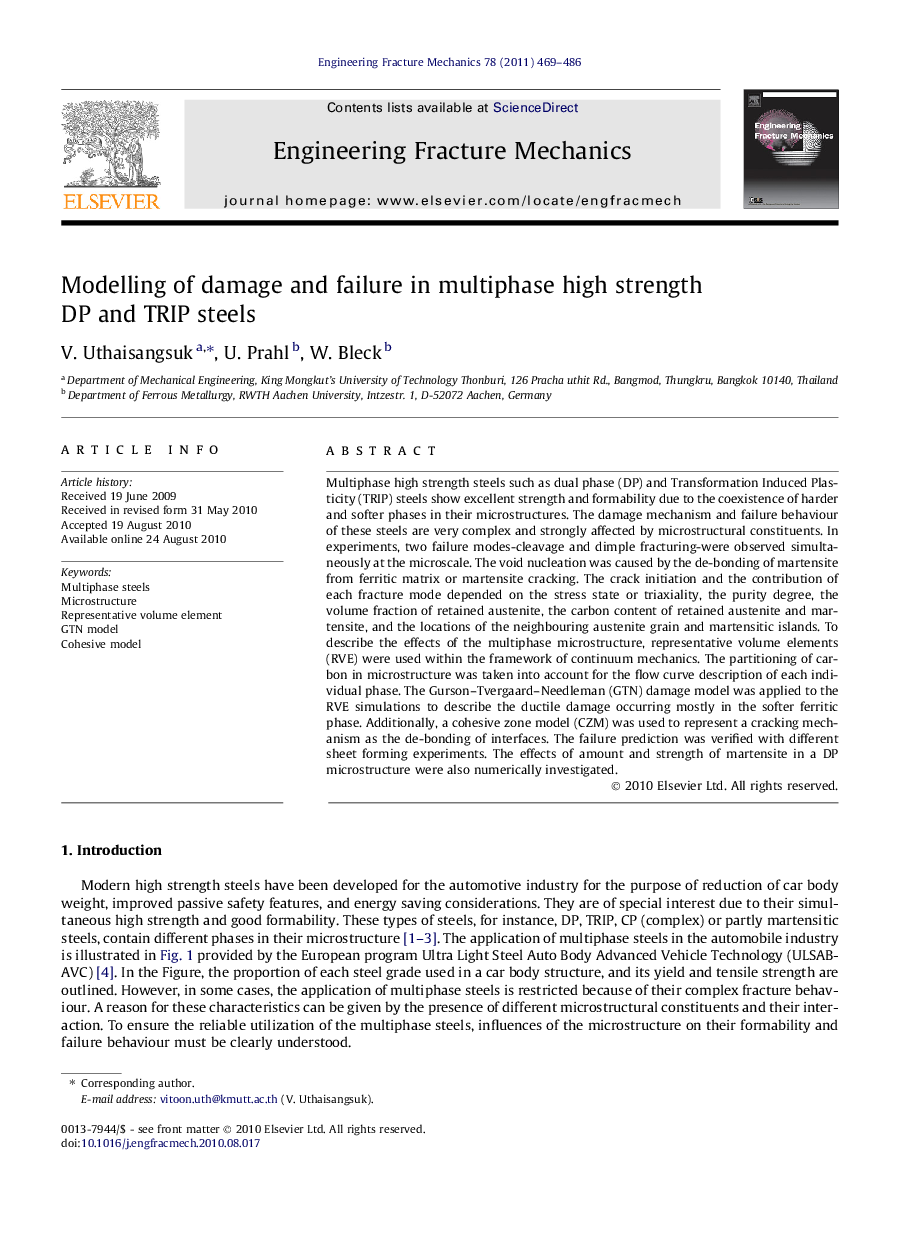| Article ID | Journal | Published Year | Pages | File Type |
|---|---|---|---|---|
| 767847 | Engineering Fracture Mechanics | 2011 | 18 Pages |
Multiphase high strength steels such as dual phase (DP) and Transformation Induced Plasticity (TRIP) steels show excellent strength and formability due to the coexistence of harder and softer phases in their microstructures. The damage mechanism and failure behaviour of these steels are very complex and strongly affected by microstructural constituents. In experiments, two failure modes-cleavage and dimple fracturing-were observed simultaneously at the microscale. The void nucleation was caused by the de-bonding of martensite from ferritic matrix or martensite cracking. The crack initiation and the contribution of each fracture mode depended on the stress state or triaxiality, the purity degree, the volume fraction of retained austenite, the carbon content of retained austenite and martensite, and the locations of the neighbouring austenite grain and martensitic islands. To describe the effects of the multiphase microstructure, representative volume elements (RVE) were used within the framework of continuum mechanics. The partitioning of carbon in microstructure was taken into account for the flow curve description of each individual phase. The Gurson–Tvergaard–Needleman (GTN) damage model was applied to the RVE simulations to describe the ductile damage occurring mostly in the softer ferritic phase. Additionally, a cohesive zone model (CZM) was used to represent a cracking mechanism as the de-bonding of interfaces. The failure prediction was verified with different sheet forming experiments. The effects of amount and strength of martensite in a DP microstructure were also numerically investigated.
